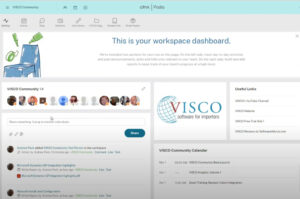There is a temptation to minimize the anticipated total cost to implement software. When evaluating and selecting ERP applications, most companies will compare the quotes and weigh the proposals based on the hard cost each vendor is proposing. Of course, one needs to consider functionality as a component that needs to be weighed into the equation, but what I would suggest is to evaluate everything in terms of costs while separating costs into two categories: Hard Costs and Soft Costs.
Hard Costs:
Vendors will typically lay out the Hard costs associated with acquiring a new ERP application in their proposals. These costs will typically include:
• Implementation
• Licensing Fees
• Maintenance
• Customization
• Hardware
The two components to the hard costs that are the most difficult to understand are the Implementation and Customization costs. These are service intensive costs and are always the most expensive for the software vendor to provide. If you ask the vendor to provide a fixed price for these components, be prepared to be less than dazzled with the overall success of the implementation. By providing a fixed cost for these services, you are asking the vendor to take their focus off of the success of your business and instead to guard against taking a loss on the project. Many times the best solution is a fixed price for a set number of hours that you and the vendor decide is a fair expectation to make. The implementation will be a success with the understanding if those hours are used up and additional training and customization are needed then there may be an additional cost.
Soft Costs:
These are almost always under estimated by companies wishing to implement new ERP solutions. These are internal costs associated with:
• Using employee time to evaluate their job functions to look for areas of improvement
• Using employee time to evaluate potential software solutions
• Using Employee time to train on the new solution
• Loss of efficiency and productivity during the implementation period
Far and away the most expensive will be the loss of efficiency from the first day the new system is implemented to at least 6 months into the project. There is going to be a sharp drop off in employee’s ability to do their jobs as they get used to doing things in a new way. By nature, people are reluctant to change their behavior and there will always be naysayers who wish they could “just do things the way they have always been done”. Be prepared to handle this from a management perspective, and in selecting an ERP software vendor, consider which team will help keep the employees at ease during the transition period. If the personality fit is not good during the evaluation period, it will only get worse during the implementation.
By preparing yourself for both the soft and hard costs of implementing software, it may change your perspective on which vendor is best suited to help bring the company to the next level of efficiency or if it makes financial sense to make a change at all.




